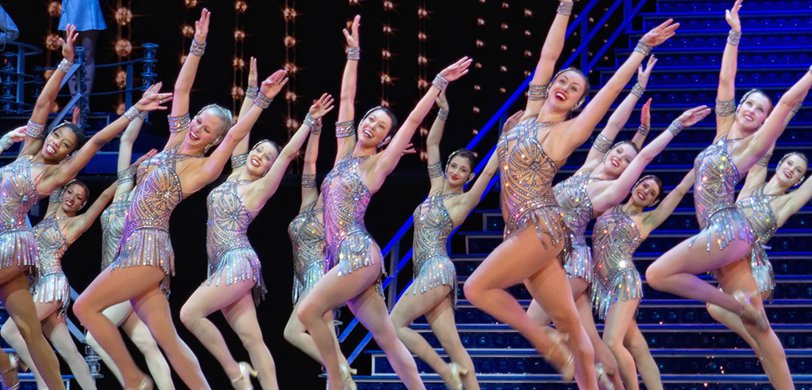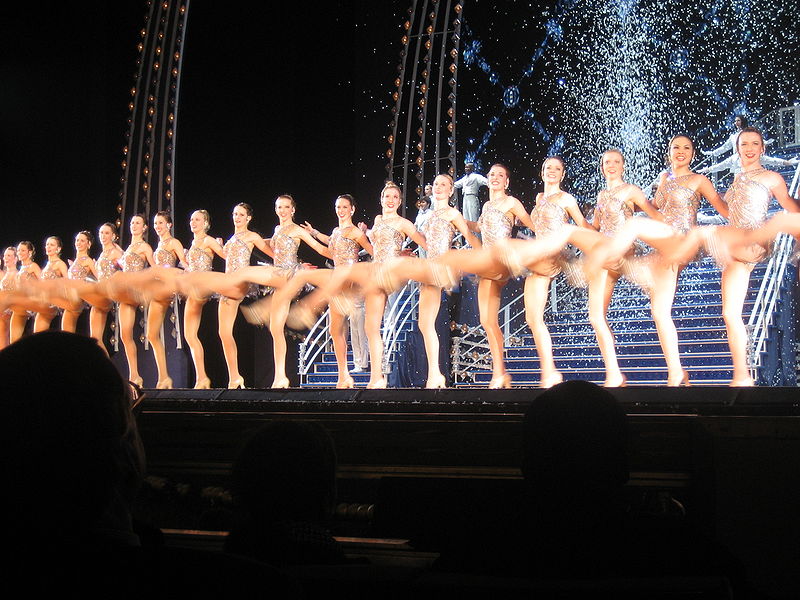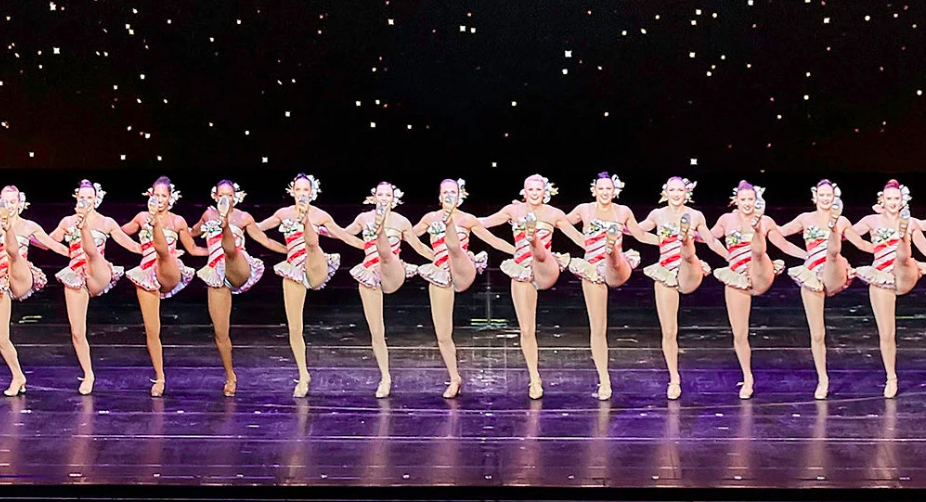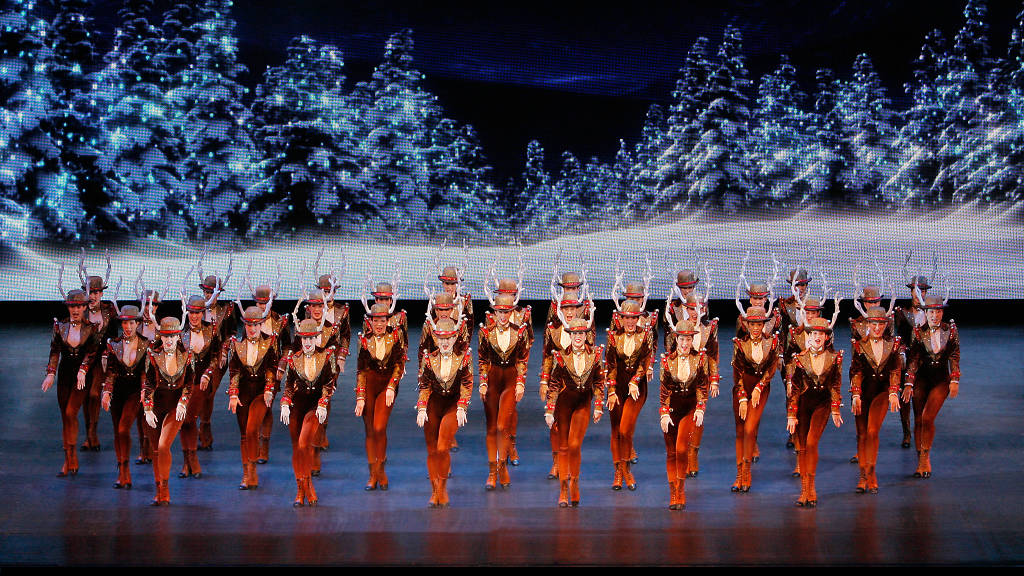David Agress has been the lighting designer for the past 13 Christmas Spectaculars featuring The Rockettes at New York City’s iconic Radio City Music Hall. This year, the show, which runs through January 6, features immersive new video by Obscura for many of the numbers, as well as 100 dancing Intel drones. Agress talks about changes to the lighting in recent years as well as the impact of the new video.
Live Design: How has the lighting rig changed over the past decade for the show?
David Agress: By 2008, as we came to rely more and more on digital scenery, I had changed most of the over-stage lighting and much of the FOH to automated fixtures. The tungsten lamps could no longer compete with the video sources and LED content that was being used throughout the show.
Three years ago, Radio City decided to purchase all the show’s lighting equipment rather than continue with a rental package. At that time, I was able to “retire” 200+ color scrollers and all the ETC Source Four ellipsoidals. I replaced them with 300+ ETC LUSTR II. Needless to say, this represented quite a change in the overall show lighting.

LD: What were the specific changes this year, especially "in light" of the enhanced video and drones?
DA: The new onstage video content and improved house video mapping impacted the lighting more than the 100 drones, but both elements required attention mostly regarding intensities, color control, and containment. A lot of the work involved taking light away (in the case of the drones) and matching and balancing (in the case of the video).
To help the house projections, I put top hats on all the FOH moving lights (some custom-made) to eliminate any ambient flaring. The projections completely cover the ceiling, and many fixtures are only four feet away. The LUSTRs put out zero spill. Even though the box boom positions hug the side walls, there is no light contamination on the projections at all.
I also removed all lighting fixtures from the house side walls. These lights are used to illuminate the cast when they appeared on the Choral Stairs—the narrow playing areas that run along the house side walls at Radio City. Because of their hanging position, above the Choral Stairs, these lights were always silhouetted when house projections were used, and they really broke the look of the immersive video mapping. I replaced them all with double RGBAW LED Tape in custom extrusions with a small masking flap and stood-off from existing pipes mounted to the house walls. This made the light sources virtually invisible and the projections pristine. I also used more LED Tape to replace the Choral Stair foot lights that had been taken out of service during the 1995 renovation. Getting that position back as was a real bonus.

LD: How does the lighting help set the scenes and keep The Rockettes and other performers the center of attention in all that glitz?
DA: There is definitely an abundance of glitz in the show and, obviously, lighting needs to enhance all of it. The creative team has many discussions early in the process regarding what should be featured at any given moment; and for me especially about where video—often the most dominant visual element on the stage—might need to pull down so lighting can feature a specific dance moment or reveal an effect that accents some musical hit or flourish. Most of the video content on the 90'x40' upstage LED wall is intentionally toned down at the bottom eight feet to help keep the cast’s background darker than the rest of the stage.
The Rockettes are the stars of the show, and I treat them appropriately. They are unique in that they require “dance” lighting but also need show-biz glamour lighting as well. I try to keep them as either the brightest thing on the stage, or with lighting positions and angles, the most light-directed. The Rockettes’ cues tend to be big and bold. When they are in a traditional Rockettes dance line, I think of them as one person 6' high and 70' wide. The moving lights almost always follow them specifically focused rather than creating a general area light.
LD: What about special effects?
DA: Every scene in the show has at least one unique special effect. We have pyro, smoke, fog, flying, streamers, bubbles, light-up costumes, a 50' turntable, a 70' wide band car that can raise on the orchestra pit, travel up stage and lower on any of the three stage elevators. Plus, the giant LED video wall that backs almost every scene, 100+ performers, and the immense walls and ceiling of Radio City fully video mapped. It’s a busy show.
LD: Use of color and movement in the lighting?
DA: Color is always a big concern. There are literally thousands of costumes and costume pieces, and everything has to work with video content that shifts endlessly. The lighting is the blending factor that connects it all. The LUSTRs are my best friend here. While the moving lights are usually taking care of scenery, effects and key-lighting performers, the LUSTRs are always toning the cast and environment. They are almost never “off” but usually default to a low UV level as a base to pop shadows and accent sparkles.
There is surprisingly little obvious lighting movement (although there’s plenty going on). The show has a basic “legit theatre” vibe and integrity to it. It’s spectacular, but it’s not the circus.

LD: What are your favorite numbers in terms of the lighting?
DA: I have two favorite moments (with many runners-up) in this show. My favorites are, in many ways, the simplest.
“Parade of the Wooden Soldiers” is a show-stopping Rockettes dance number performed virtually the same as it was in 1933. The perfect, intricate choreography (no kicks, no legs showing) is done on a bare stage against black. I added moving lights to the piece when I lit the Rockettes 60th Anniversary Tour in 1992. Shafts of white light, timed perfectly to the choreography, follow the non-stop patterns of Rockettes’ movement to create a full-stage clockwork that never distracts from the dance but fully complements it from start to finish. I think it contemporizes and expands the experience without diminishing its original impact.
New this year, foreshadowing the drone sequences, two aerialists perform a flying ballet interacting with programmed moving light particles on the LED wall. The two flyers are each lit with one LUSTR II used as a deck followspot in an upstage wing. Uplighting the aerialists gives them an unexpected and dramatic look from a unique angle and is also the best position to avoid illuminating the flying harness. Those are the only two lights used for the number, and it’s the only time in the show (besides the 3D movie) where the rig is completely out.

LD: How did you collaborate with the folks at Obscura Digital?
DA: The very talented people at Obscura were great to work with. They were totally aware, concerned, and pro-active about all the many challenges and opportunities this show represented. There was an understanding by everyone that adding visual elements outside of the existing stage show in the vast space of Radio City was going to be a delicate balance of focus.
To get started, I sent them our existing cue-list and time-codes with detailed explanations of any cues or sequences that I thought might be impacted or enhanced with video content. There were weekly conference calls, animatics. and pre-vis movies emailed, analyzed, redone, reviewed by the creative team, and redone again. We also had three testing and viewing sessions at Radio City where the whole creative team could evaluate the progress at full-scale with a few dancers on stage, costumes, and improvised lighting. It was a painstaking process since we were basically creating animated movies and a live show that had to coexist in real time.
During techs, Obscura had a full team and load of equipment on-site. They were constantly tweaking and adjusting, and there was a lot of dialogue (both ways) between our tables every day.
LD: Is the lighting show-specific or part of an overall Radio City Music Hall rig?
DA: When the lighting equipment for the Christmas Spectacular was purchased, it became the basic rep plot. Most of it remains hanging and is in use all year. It makes for a pretty nice house system if you come into the hall with a show and no gear.